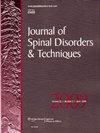了解大型数据库研究。
Q Medicine
引用次数: 7
摘要
大数据集有几个独特的问题。大量有偏差的数据仍然存在偏差,临床意义并不总是与统计意义相同。大量的预测结果可能会混淆结论,但有几种方法可以管理大范围的数据集,包括匹配、回归、倾向评分和随机化。本文章由计算机程序翻译,如有差异,请以英文原文为准。
Understanding Large Database Studies.
There are several problems unique to large data sets. Large amounts of biased data are still biased and clinical significance is not always the same as statistical significance. Large number of predictors of outcome can confound conclusions, but there are several ways to manage wide ranging data sets including matching, regression, propensity scores, and randomization.
求助全文
通过发布文献求助,成功后即可免费获取论文全文。
去求助
来源期刊
CiteScore
2.16
自引率
0.00%
发文量
0
审稿时长
3 months
期刊介绍:
Journal of Spinal Disorders & Techniques features peer-reviewed original articles on diagnosis, management, and surgery for spinal problems. Topics include degenerative disorders, spinal trauma, diagnostic anesthetic blocks, metastatic tumor spinal replacements, management of pain syndromes, and the use of imaging techniques in evaluating lumbar spine disorder. The journal also presents thoroughly documented case reports.

 求助内容:
求助内容: 应助结果提醒方式:
应助结果提醒方式:


